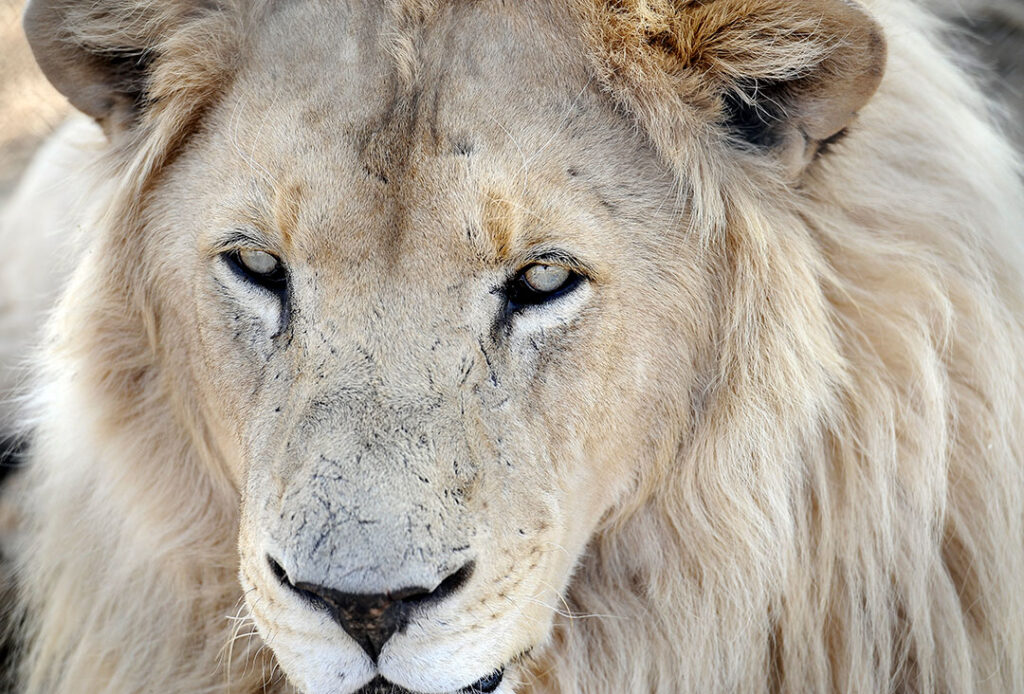ADF STAFF
Thousands of lions live in South Africa, but most of them never set foot in the wild.
Rather, the iconic animal is farmed like cattle — penned in enclosures in dozens of loosely regulated, sometimes-unsanitary operations. From the day they’re born, these lions are marked for slaughter: Their body parts will be sold as trinkets in Asian markets, and their bones will go into traditional Chinese medicine (TCM) concoctions.
In the process, the rising tide of wildlife traffic — both sanctioned and poached — between Africa and China is decimating the continent’s natural resources even as it continues to feed the potential for future pandemics like COVID-19 by creating conditions ripe for zoonotic diseases, which jump from animals to people.
“It’s a numbers game,” Chris Walzer, executive director of the World Conservation Society’s (WCS) Health Program and a wildlife veterinarian, told Mother Jones magazine. “You’re providing a lot of opportunities for human-animal interface, with a high diversity of species with unknown viruses mixing with each other.”
Zoonotic diseases are those that spread between animals and people. Stopping the illegal wildlife trade would save Africa’s natural heritage and help stop the spread of such diseases at the same time, according to the African Wildlife Foundation.
“If we can keep wildlife safe from poachers, make wildlife products difficult to move around, actively involve key local players, and dampen the demand for wildlife products, then Africa’s magnificent animals have a fighting chance,” Dr. Philip Muruthi, the foundation’s Kenya-based chief scientist, said on the organization’s blog.
Prized Commodities
Even as the foundation and other groups fight poaching, an estimated 8,000 lions are being raised on farms regulated by the South African government, which has set an export quota of 800 lion skeletons a year — a number the government reduced from 1,200 in 2019 in response to public outcry.
An intact male lion skeleton can fetch more than 50,000 rand (about $3,000), according to the Conservation Action Trust, based in Cape Town, South Africa. Once the skeleton reaches China, the bones become a stand-in for tiger bones, a popular ingredient in TCM potion recipes that claim to treat everything from arthritis to impotence.
Lions are only part of the enormous trade in wildlife between African nations and China. In South Africa alone, 33 wild animals, including lions, cheetahs, several antelope species, giraffes, zebras, and black and white rhinos, have been reclassified as farm animals, according to Africa Geographic. Donkeys also are slaughtered in large numbers, their skins used for ejiao, a gelatin-like substance used in TCM potions.
Whether it’s rhino horn ($30,000 a pound), pangolin scales ($1,500 per pound) or elephant ivory ($1,100 per pound), tremendous amounts of money trade hands on legitimate and black markets as Africans supply a ravenous Chinese market, according to the Council on Foreign Relations.
Since the outbreak of COVID-19 and SARS before it, China has come under intense scrutiny for its taste for wild meats and the so-called wet markets that supply them. After COVID-19 was traced to a wet market in Wuhan, China bowed to international pressure and closed it.
China has since removed pangolin scales from its list of approved ingredients for TCM. It’s not clear, however, how long the ban will hold up, said WCS’ African program director Tim Davenport, who is based in Tanzania.
“It seems probable that pangolin scales will remain listed in the annexes to the TCM,” Davenport told ADF. “These include some drugs not in the pharmacopoeia, and this may include pangolin scales. The devil may yet be in the details.”
Out in the Open
Much of the traffic in wildlife between Africa and China flows right under the noses of the public in the form of everyday shipping by international carriers such as DHL, the world’s largest package deliverer.
The massive volume of commercial and parcel traffic between China and the rest of the world makes it a simple process to move wildlife parts, according to the monitoring site Traffic’s report “In Plane Sight: Wildlife Trafficking in the Air Transport Sector.”
“Many companies of this nature, as well as airlines and shipping companies, could do a whole lot more to tackle this,” said Davenport. “There can be no illegal wildlife trade without the means to move the ‘goods.’”
Another obstacle to curtailing the wildlife trade between Africa and China is financial. Since the outbreak of COVID-19, African leaders have increasingly been forced to recalibrate their national budgets, prioritizing health care over other pursuits such as wildlife conservation.
The East African Business Council has estimated that the economic crash associated with COVID-19 could cost the region’s wildlife tourism industry more than $5.4 billion. Further complicating matters, lockdowns have put many people out of work, making the money available from illegal harvesting and sale of wildlife more attractive, according to the African Wildlife Foundation.
Ultimately, the burden of stopping the flow of lion bones, abalone and other wildlife between Africa and China falls on Africans, said foundation CEO Kaddu Sebunya.
“The trade routes trace back to decisions made on the ground,” Sebunya told the International Wildlife Trade conference. “We know from our work that leadership at every level — from the families living in wildlife-rich areas to the heads of state — is an essential ingredient.”

